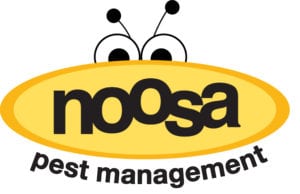5 Tips for Identifying a Bed Bug Infestation

Bed bugs are no joke, and for many homeowners, the thought of having bed bugs is a frightening prospect. Over 20% of people in the U.S. have dealt with bed bug infestations. They spread quickly and are very difficult to get rid of. They’re also challenging to identify and can easily be mistaken for other pests. We’ve put together some telltale signs to look out for.
1. Use a Powerful LED Flashlight
While adult bed bugs can be upwards of 7mm in size, they are often smaller, which makes them difficult to detect without a magnifying glass or high-powered flashlight. If you think you have an infestation in your home, inspect your bed with an LED flashlight. Make sure you look between your mattress folds and behind your headboard. It’s also a good idea to check the area where the bed frame and box spring meet. You may be able to spot their feces in these areas, which are small and resemble poppy seeds.
Adult bed bugs have a reddish-brown color, while immature ones have a translucent white-yellow hue. While most bed bugs can be seen with the naked eye, you may be unable to notice ones that have just been born. With a powerful flashlight, it should be easier for you to detect bed bugs along the cracks of your bed frame and seams of your mattress.
2. Inspect Your Sheets
You should also be on the lookout for specks and smears of blood on your sheets. This almost always means that bed bugs are nearby. It’s very easy to roll over or smash them as you’re sleeping. Fecal matter can appear as dark black or brown stains on your sheets or mattress. You might also notice a sweet, musty odor that’s similar to the scent of mold. If you detect a lingering smell, it may be a sign of a large infestation.
3. Look for Casts
Be on the lookout for casts, which are produced when bed bugs shed, this is an excellent way to determine if you have a bed bug infestation. When bed bugs get close to maturation, they molt and leave behind exoskeletons that are often much easier to spot than the insects themselves. Keep in mind that all bed bugs go through five immature stages before becoming adults, which means that they will shed five times.
If there’s a large infestation in your home, you may discover thousands of molted skins. On the other hand, newer and smaller infestations are more difficult to identify. The molted skin of a bed bug has the same color and shape as the insect itself. When you’re looking for casts around your home, make sure that you check areas like:
- Mattress seams
- Personal belongings
- Baseboards
- Wall/ceiling junctions
- Behind headboards
4. Bites Are Almost Impossible to Identify
If you recently woke up and found a red mark on your arm or leg that you can’t explain, this doesn’t mean that you have a bed bug infestation in your home. Bites are a highly inaccurate method of finding bed bug infestations. Since dozens of insects can bite your skin in a manner that produces a red and itchy spot, it’s highly recommended that you use the other identification methods in this guide. Most people who get bitten by bed bugs don’t even react to them.
Even if the spots on your body are caused by bed bugs, there are several other reasons why this might be the case. For example, if you’ve recently traveled, the bite you find may be several days old. In this scenario, the bed bugs may have been in your hotel. By focusing on the other signs of bed bugs, you should be able to identify them early on.
5. Leave It to the Professionals!
Bed bugs should always be left to the professionals. If you already have bed bugs in your home, it’s best to hire a professional to ensure all of them are removed. If you attempt this process yourself, you may not get rid of them entirely. Even if only two bed bugs remain, they can spread, which will eventually lead to another infestation.
Here at Noosa Pest Management, LLC, our technicians have the training and expertise to search for and identify a bed bug presence. If we find bed bugs, our team can apply various bed bug treatments to make sure all of them are removed from your home. These bed bug treatments include everything from the application of heat to liquid solutions. Most infestations should be removed with heat, which is the superior technique. Heat treatments are able to pull bed bugs directly out of the places they’re hiding. While liquid treatments are also effective, they might not be able to access hard-to-reach areas like heat can.
How to Prevent an Infestation
If you’d like to avoid these insects altogether, there are numerous bed bug prevention tips you can follow. For example, make sure your bedroom isn’t cluttered. Bed bugs need places to hide, which is why a messy room is perfect for them. Consider placing a protective cover on your box springs and mattress. Inspect the cover regularly to look for holes.
It’s also a good idea to vacuum your home once or twice every week. Make sure you vacuum your upholstered furniture, mattress, curtains, and carpet. If you wear pajamas, you can protect yourself from bites with long pants and long sleeves. When you travel, always keep your bag on an elevated surface, which can be anything from a dresser to a suitcase stand.
If you’re thinking of buying used bedding or mattresses, it’s best to change your mind. There’s a much higher risk of bed bugs being found in old bedding when compared to new sheets or mattresses. If you wash your clothes at a shared laundry facility, keep them in plastic bags.
Bed bugs can be found anywhere. Knowing what to look for allows you to prevent infestations and identify them when they occur. If you believe your home is infested, call Noosa Pest Management today to schedule an inspection!

Fred Wingate
Chief Bugman
Fred Wingate is the dedicated Owner and Chief Bugman at Noosa Pest Management, a thriving pest control company in Charlotte, NC. He established the company in 2006 with a vision to provide exceptional pest management services to the local community. By staying up-to-date with the latest advancements in pest management and fostering a culture of continuous improvement, he ensures that Noosa Pest remains at the forefront of the industry.
Not only is Fred deeply invested in the well-being and satisfaction of his clientele, he is also passionate about supporting the local community, including schools, churches, and other organizations. The future of our community is important to Noosa Pest, and proudly contributes to its growth and prosperity.
